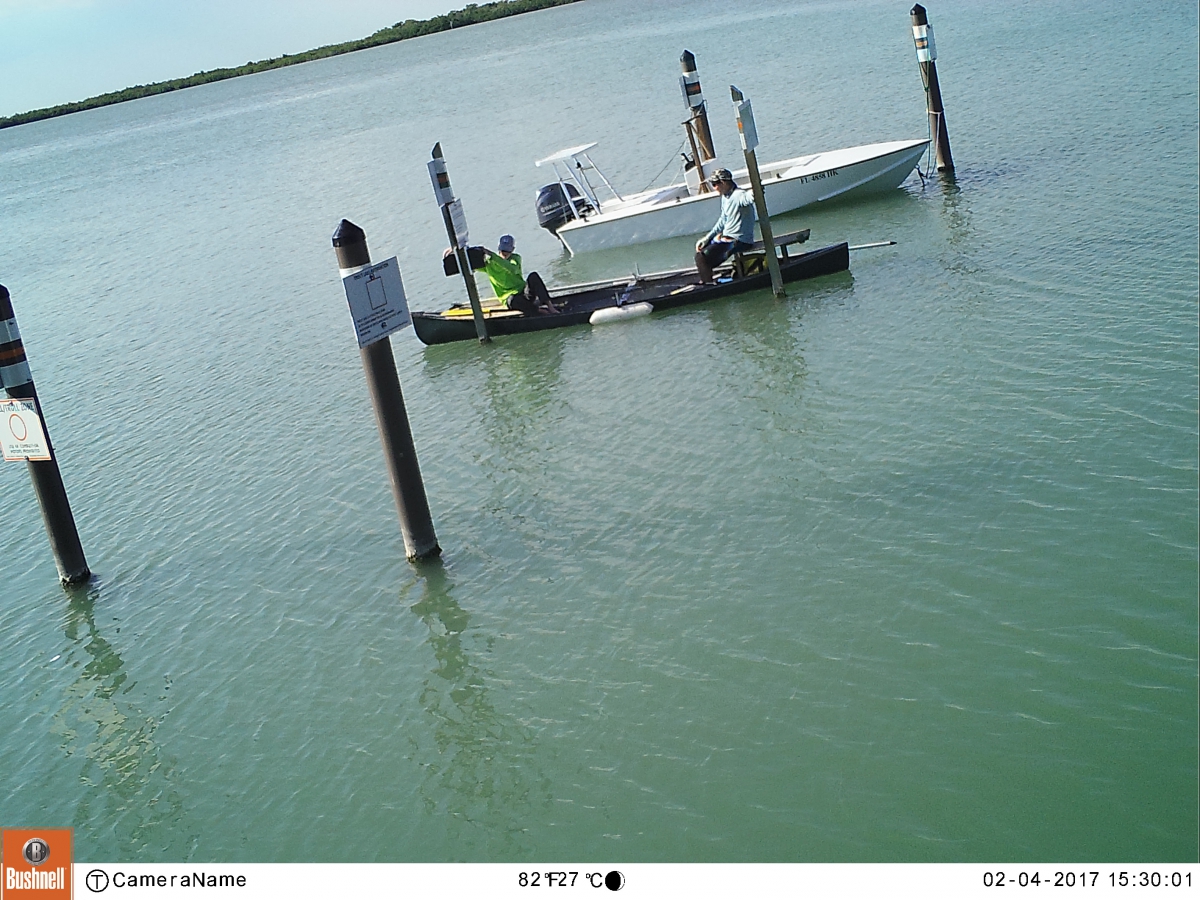It’s now 2017, and the Snook & Gamefish Foundation Angler Action Program continues to grow. The electronic-logging program for fishermen has been used in state-wide stock assessments for snook, trout and redfish since its inception six years ago. But Angler Action is more than just a tool to assess the population for a particular species of fish. It’s now a big part of a study in the Everglades.
Joe Bay, a chunk of water on the northeastern shore of Florida Bay, which has been recently re-opened to fishing after nearly 40 years of closure, is the focal point of a comprehensive study to evaluate the impact of the no-fishing edict.
Since 1980 until late 2016, Joe Bay was off limits to fishing due to declining American Crocodile populations in the area. However, the American Croc, once endangered, has since rebounded and the no-motor area was re-opened to fishing in November of last year, which led to the Joe Bay Fisheries Project, headed by Florida International University Associate Professor Jennifer Rehage.


Rehage invited SGF and a handful other conservation groups to participate in the study, which is being funded by ENP on a year-to-year basis.
“What I love about the Joe Bay project is that it really points out how fantastic the marriage between anglers and researchers is,” SGF Executive Director Brett Fitzgerald said. “Whether you call it ‘citizen science’ or whatever the new buzzword is, Joe Bay is nothing but a total win for everyone. It debunks a lot of myths. Data will lock anglers out? Wrong --- the data actually provides access. Researchers don’t care what anglers catch? Wrong again. Fishery biologists are over-the-top excited about this new data stream. Even the fish and their habitats will benefit, as we are better able to learn which species or geographic areas are the most productive and need a higher level of protection.”
For those not familiar with the SGF Angler Action Program, anglers can log information about their trips to Joe Bay, including size and species of the fish, where they caught --- or didn’t catch fish --- the weather conditions during the outing and their overall enjoyment of the experience.
Individual data from the Angler Action Program, it should be noted, remains confidential and is used for research purposes only. It is not shared publicly.
Anglers can register for Angler Action, its App, and the Joe Bay Project via http://joebayfishing.org/angleraction/login/auth and the Snook& Gamefish Foundation website: http://snookfoundation.org/content/angler-action-program. There’s also a survey available at Trout Creek, which is just south of Joe Bay, for those who prefer putting pen to paper.
“I think it’s really helpful,” said Rehage, an aquatic ecologist. “I think these days to reach anglers you need multiple media. Some anglers are never going to use the App. Some people, having an App, they’ll love it. That’s the way they interact and connect. That’s the way they go about their business today. It’s to our advantage to have the paper survey and reach out to people, if that’s how they want to do it.”
The data generated from the Angler Action Program and its Joe Bay App, Rehage said, are invaluable to help ensure the project yields accurate assessments.
“The App is a really crucial part of getting that information,” Rehage said. “(Anglers) either visit one time and they don’t come back or they keep coming back. We hope to find out how they liked the fishing there and send that feedback to the Park.”
Since the study is expected to take three years, it’s probably too early to draw firm conclusions about the catch-and-release area. For instance, Rehage and her team want to compare the fish populations of Joe Bay and nearby Snag Bay, which have been reopened after lengthy closures and Little Madeira Bay, which has remained closed. A definitive answer has yet to be formulated about any of the areas in the study.
The Joe Bay App was launched in February. The actual study began in December.
“I think we can say there’s some interest in people using Joe Bay,” Rehage said. “Our hope is to get an entire year’s cycle. With different seasons, people will be coming out at different times. After a year of that, we’ll have a good idea of year one.”
The Joe Bay Project will not lack manpower. In addition to FIU, the ENP and SGF, Rehage will have assistance from the Florida Fish and Wildlife Conservation Commission and the National Audubon Society. All five have a significant role in the study. Teamwork is crucial.
“It’s always tricky because you have people with different needs,” Rehage said. “As a project leader, you assemble a team, you pick people because they’re the right people and they’re going to make your team better. You’re going to get something out of it that’s bigger than any one piece of the team. By bringing a team together you’re going to get some amazing things, because everyone is contributing and no one can do it (individually). If it were just us at FIU, it would not be as good as if we had all these people. It’s tricky in terms of management, but if it works, the benefits are so great.”
Mike Hodge is a freelance writer from St. Augustine, Fla. and a regular contributor to SGF.
